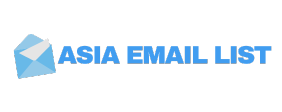Understanding B2B Email List Segmentation A Comprehensive Guide
Segmenting your B2B email list is a crucial step in achieving targeted and effective email marketing campaigns. By dividing your email contacts into smaller, more specific groups based on shared characteristics, interests, or behaviors, you can tailor your messages to resonate with each segment. This guide will walk you through the process of B2B email list segmentation and offer best practices to maximize the impact of your email marketing efforts. **1. ** Data Collection and Analysis: Start by gathering relevant data about your subscribers. This information can include job titles, industry, company size, geographic location, past purchases, engagement history, and any other data that helps identify distinct groups within your email list.
Analyze this data to identify patterns
Commonalities, and potential segments. 2. Define Segmentation Criteria: Based on your data analysis, determine the segmentation criteria that align with your business goals. For example, you might segment based on: Demographics: Job title, industry, company size, location, etc. Behavioral: Open rates, click-through Honduras B2B List rates, purchase history, website interactions, etc. Interests: Product preferences, content consumption patterns, event attendance, etc. 3. Segment Creation: Using your defined criteria, divide your email list into different segments. Depending on the size of your list and the complexity of your criteria, you may have a few broad segments or several smaller, more targeted ones. 4. Personalization: Once you have your segments, personalize your email content accordingly.
Craft messages that address
The specific needs, pain points, and interests of each segment. Personalization goes beyond simply addressing the recipient Asia Email List by name; it involves tailoring the entire content to suit the segment’s characteristics. 5. A/B Testing: To refine your segmentation strategy, conduct A/B tests with different versions of your emails. Test variations in subject lines, content, calls-to-action, and send times to understand what resonates best with each segment. 6. Automated Workflows: Leverage email automation to nurture and engage each segment at the right time and with relevant content. Set up automated workflows triggered by specific actions or behaviors, such as welcome sequences, abandoned cart emails, or re-engagement campaigns. 7. Monitor and Analyze: Regularly monitor the performance of your segmented email campaigns.
Track open rates, click-through rates, conversions, and overall engagement for each segment. Use this data to optimize your strategy continually. 8. List Maintenance: Keep your email list updated and clean by regularly removing inactive or unengaged subscribers. Segment your list even further based on engagement levels to target active subscribers differently from those who rarely interact with your emails. 9. Respect Privacy and Compliance: Ensure that your email segmentation practices comply with relevant data protection and privacy regulations. Obtain consent from subscribers, provide clear opt-out options, and handle personal data responsibly. 10. Iterate and Improve: B2B email list segmentation is an ongoing process. Regularly review and update your segmentation criteria as your business and audience evolve. Continuously strive to improve your segmentation strategy to achieve better results.

